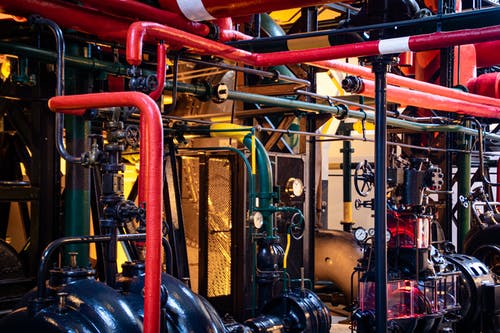
Biogas is produced by the anaerobic fermentation of organic waste in a biogas plant. It is either used in combined heat and power plants to generate electricity and heat or processed into biomethane. The fermentation residues are a very good fertilizer. The advantages of biogas plants are its sustainability and constant availability.
How a biogas plants works
In a biogas plant, biogas is produced by the fermentation of biomass. The biomass used is mostly natural waste such as solid manure, slurry, biowaste, food scraps or green waste. It is important that the substrates used are degradable under anaerobic conditions. In the biogas plant, the organic waste is decomposed by microorganisms under exclusion of oxygen. This produces various gases such as methane and carbon dioxide.
The substrates are first mixed in the pre-pit, processed and then filled into the digester. The pre-pit ensures a continuous flow to the fermenter. The fermenter is where the fermentation takes place. It is sealed airtight and fermentation can begin. The temperature and the pH value also play an important role.
There is wet and dry fermentation. In wet fermentation, the substrate has a high water content and is mixed by agitators during the process. Dry fermentation manages without this mixing as well as without liquefaction of the substrate. The choice of fermentation method depends mostly on the nature of the substrate used and the substrate currently available.
The use of biogas plants
Biogas is mostly used directly at the biogas plant in combined heat and power plants to generate electricity and heat. However, it can also be upgraded to biomethane and fed into the natural gas grid. In addition, the biomethane can be used as fuel for natural gas-powered vehicles. Since this upgrading of biogas is still very expensive, it is often not profitable enough. The biogas is first desulfurized, since hydrogen sulfide leads to corrosion. Gas drying then takes place. CO² separation from the biogas is done by a membrane, pressurized water scrubbing or other processes. The calorific value must be adjusted and the gas compressed to line pressure.
The digestate from the biogas plants is also excellent as fertilizer. This fertilizer smells less harsh than normal slurry and at the same time is more compatible for plants, as nitrogen access is easier.
The advantages of biogas.
The biggest advantage of biogas is its sustainability. The biomass consists of otherwise unused waste and the electricity and heat generated come from renewable sources. The fermentation residues are also used and contribute as fertilizer. Thus, artificial fertilizer can be saved. For farmers in particular, having their own biogas plant is an attractive investment. Besides the production of biogas for own use, fertilizer for the own fields is produced at the same time.
Transport distances are usually very short, as the substrates and the biogas plant are often located in the same place. Biogas is CO²-neutral, since no additional carbon dioxide is released during combustion. Only the amount that the plant has bound up to that point during growth is released again. Biogas is constantly available, can be stored very well and can be transported easily. Wind power, solar energy and hydropower are highly dependent on the weather and are subject to natural fluctuations. Since this is not the case with biogas, it can be an excellent complement to the other renewable energy sources.
I believe in creativity and try to express the same with my words. I enjoy writing and keeping myself in touch with the books.

